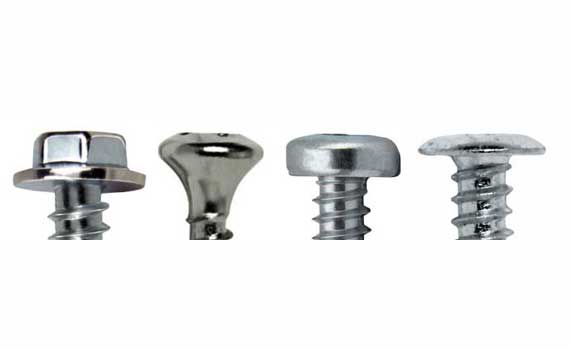The use of screws is crucial to a wide variety of industries, from construction and engineering to making furniture and advanced machines.
Today there are many types of screws for different applications. A screw comprises the thread, the neck, and the head, and each one has an important role to play. In this article, we will describe the different types of screw heads, their main characteristics, their advantages and their applications.
The head of a screw is located at the top, it is the widest part and it is what allows the screw to turn with the help of a screwdriver. It is the shape of the screw head that determines which tool should be used to fasten the workpiece.
Pan head screws
The pan head screw is one of the most popular types of screw because it is simple, it’s not expensive, and effective. The pan head screw can conveniently fit the majority of recesses.
Applications of pan head screws
Pan head screws are used in carpentry, brasswork, and metalwork, as it is necessary for these works to keep the screw head submerged in the surface or at the same level as it is. The screws are ideal for preventing injuries in the event that they come into contact with the human body.
Countersunk head screws
Countersunk screws have a head angle of approximately 80 degrees. Their conical heads allow the screw to remain at the same level as the position where it is installed without protruding above the surface.
Applications of Countersunk head screws
Countersunk head screws are used when a smooth surface is required. They generally use it in carpentry, brasswork and metalwork, since in these works it is necessary to leave the screw head submerged with the surface or at the same level. Common applications include: bridge decks, walkways, and handrails.
Hex head screws
The hex head screw has a hexagon-shaped head and is used for mounting or fastening parts as well as pressure. The hexagonal head screw is one of the most used in construction and in industry in general.
Applications of Hex head screws
Among the screws with a hexagonal head are those that have a pivot, which allow joints with great tightening and the possibility of immobilizing the joint, using a pin in the pivot. Hex head screws may also have full-bearing washers, or flanged heads with bonded washers. Those with a hexagonal head with a flange, their advantage is that they do not require a washer between the head and the piece you are working on, as well as allowing you to apply a great amount of torque.
Hex head screws can also be used to secure heavy objects to masonry, attach light objects to timber or steel, and join heavy timber.
Low head screws
Low head screws are used in precision applications where reduced head clearance can be a problem. Due to its reduced head it cannot be squeezed to high levels. They are available in stainless steel, carbon steel, or alloy steel, which means they are corrosion resistant and can be used in underwater applications
Applications of low head screws
Generally, the low head screws are used in the design of metal shears with very short head lengths. Low head screws are also used in home furniture assembly due to their low height and clean appearance.


